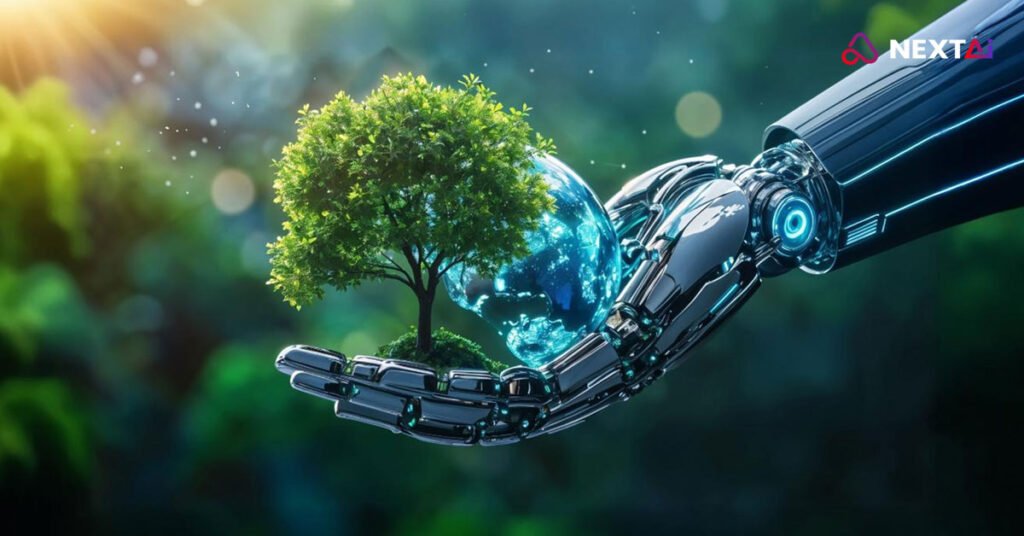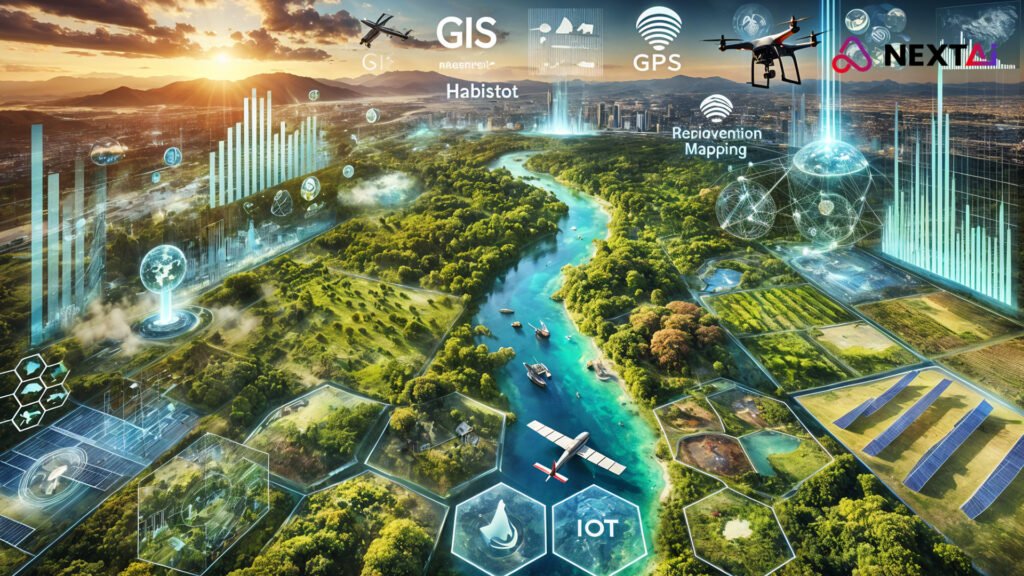
AI in Environmental Conservation
By Rajiv Rajkumar Bathija – Visionary with 35 Years of Experience | AI in environmental conservation
Artificial Intelligence (AI) is rapidly emerging as a critical tool in the fight against climate change, biodiversity loss, and environmental degradation. With the increasing urgency to protect our planet, AI is helping scientists, environmentalists, and policymakers tackle some of the most pressing challenges in conservation. From monitoring wildlife to optimizing resource use, AI is revolutionizing the way we protect our environment. However, as with any powerful tool, AI also brings ethical concerns that must be addressed to ensure its positive impact. In this blog, we explore how AI is being used in environmental conservation and the ethical challenges it presents.

AI Tackling Climate Change
AI is being leveraged to tackle climate change in several innovative ways:
- Climate Modeling: AI-powered algorithms are used to create more accurate climate models, helping predict future climate patterns and extreme weather events. These models can provide early warnings for disasters like hurricanes, floods, and droughts, allowing for better preparedness and mitigation strategies.
- Carbon Emission Reduction: AI is helping industries reduce carbon emissions by optimizing processes, enhancing energy efficiency, and minimizing waste. For example, AI-powered energy management systems can optimize heating, cooling, and lighting in buildings, significantly reducing their carbon footprint.
- Renewable Energy Integration: AI is being used to manage renewable energy resources such as wind and solar power. By predicting energy generation patterns and adjusting supply in real-time, AI ensures that renewable energy is utilized more effectively, reducing reliance on fossil fuels.
Monitoring Wildlife with AI

Monitoring and protecting wildlife is one of the most critical aspects of conservation, and AI is playing a significant role in this area:
- Wildlife Population Tracking: AI-driven camera traps and drones are being used to monitor wildlife populations in real time. Machine learning algorithms analyze images and videos to identify species, count individuals, and track their movements, helping conservationists understand animal behavior and habitat usage.
- Poaching Prevention: AI-based predictive models are being used to prevent illegal poaching by analyzing historical poaching data and identifying patterns. This allows rangers to be deployed strategically, intercepting poachers before they strike.
- Bioacoustic Monitoring: AI is also being used to analyze audio data from forests and oceans, helping scientists detect specific animal sounds. By monitoring bird calls, whale songs, or other wildlife sounds, AI can provide insights into species presence and behavior, which is crucial for conservation efforts.
AI Promoting Sustainability
AI is also helping promote sustainable resource use and reduce environmental impacts in various sectors:
- Precision Agriculture: AI-powered precision agriculture tools help farmers optimize water usage, reduce pesticide application, and enhance crop yields, all while minimizing environmental impacts. This leads to more sustainable farming practices and improved food security.
- Waste Management: AI is being used to improve waste management and recycling processes. AI algorithms can sort waste more accurately, ensuring that recyclables are not lost and that waste is processed more efficiently.
- Forest and Ocean Health: AI is used to monitor the health of forests and oceans by analyzing satellite images, assessing deforestation, and detecting illegal fishing activities. These insights are critical in guiding conservation policies and resource management.
Ethical Challenges of AI in Conservation
While AI offers incredible potential for conservation, its use also raises ethical questions that must be addressed:
1. Data Privacy and Indigenous Rights
AI conservation projects often rely on vast amounts of data, including satellite imagery, environmental sensors, and audio recordings. In some cases, these projects may inadvertently intrude on the privacy of indigenous communities living in remote areas. Ensuring that AI projects respect the rights and privacy of local communities is essential to avoid exploitation or unintended harm.
2. Algorithmic Bias
AI models used in conservation are only as good as the data they are trained on. If the data used is biased or incomplete, the AI may produce inaccurate results, leading to ineffective or even harmful conservation efforts. For instance, AI that fails to recognize less-studied species could result in skewed conservation priorities, neglecting endangered but overlooked wildlife.
3. Environmental Impact of AI
Ironically, AI itself has an environmental footprint. Training machine learning models requires significant computational power, which, in turn, demands large amounts of electricity. If not managed sustainably, the carbon emissions from data centers can contribute to environmental degradation. It is crucial to balance the benefits of AI with the energy costs of running these systems.
4. Dependence on Technology
Over-reliance on AI technology in conservation could potentially sideline traditional ecological knowledge and the expertise of local communities. Conservation must remain a collaborative effort, integrating AI tools with local knowledge and human insights to achieve the best outcomes.

Ensuring Ethical AI in Conservation
To ensure that AI is used ethically and effectively in conservation, several steps can be taken:
- Community Engagement: Conservation projects must engage local communities, respecting their knowledge, rights, and privacy. Ensuring that these communities are part of the decision-making process can lead to more successful and ethical conservation outcomes.
- Transparency in Data Use: The data used in AI models should be collected, stored, and used transparently, with clear guidelines about how it will be applied and who will benefit from it.
- Bias Mitigation: AI models should be trained on diverse datasets to reduce bias and ensure that conservation efforts are equitable. Regular audits and assessments should be conducted to identify and mitigate biases in AI systems.
- Energy Efficiency: AI developers should prioritize energy efficiency, using renewable energy sources and optimizing algorithms to reduce the carbon footprint of AI projects. By minimizing the environmental impact of AI, we can ensure that its use in conservation is genuinely beneficial.
Conclusion
AI has the potential to play a transformative role in environmental conservation, offering new ways to monitor wildlife, promote sustainability, and tackle climate change. However, the ethical challenges associated with AI must not be overlooked. Addressing issues such as data privacy, bias, environmental impact, and over-reliance on technology is crucial for building AI systems that truly benefit the planet and its inhabitants.
As we continue to explore the intersection of technology and conservation, it is essential to prioritize ethical considerations and ensure that AI is used as a tool for positive change—working hand in hand with nature, rather than against it.
Follow me for more insights on how emerging technologies are shaping the world.
Feel free to share your thoughts or reach out—I’d love to hear your perspective on how AI can be used to protect our environment and promote sustainability!

